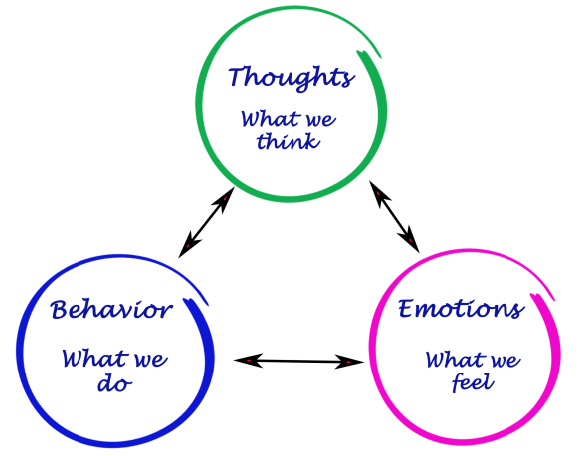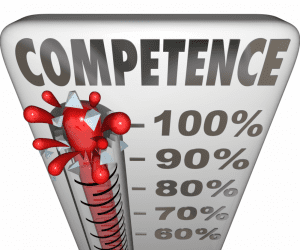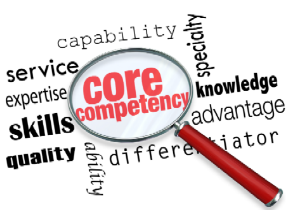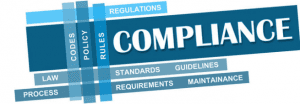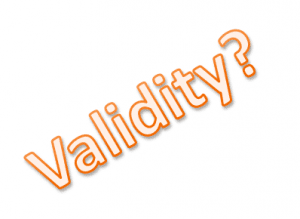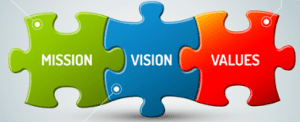
What is Competency Management
A-Z Guide
What is competency management?
Competency management is a systematic way to define role-specific, core and leadership competencies, assess employee proficiency, and link targeted learning to close gaps. Cloud platforms, such as Centranum, provide libraries, assessments and analytics. The data is used to raise productivity, compliance, retention and build a future-ready talent pipeline aligned to strategy.
What is Competency Management?
Competency Management is a business strategy with 3 distinct processes.
Firstly the identification and definition of the Knowledge and skills needed for an individual to succeed in an organization. Skills specific to job roles and those needed to function effectively within a team and the organization as a whole. Competency definitions include a set of observable criteria used for assessment. These criteria may vary for different proficiency levels.
The assessment process captures information on individual competency levels and gaps over time.
The competency development process includes the identification of suitable learning resources for the identified competencies, and the enabling of individuals to use those resources for their personal development.
Competency management covers not only the knowledge and skills staff need now, but also those that will be needed in the future to adapt to a rapidly changing market, technological, and operational environment.
Why is Competency Management Important?
Competency Management systems are an essential tool, especially in larger knowledge-intensive organizations in healthcare, engineering, and technology. They help:
- Drive excellent job performance by ensuring staff have the necessary knowledge and skills to succeed.
- Improve productivity because competent staff are more efficient
- Achieve quality assurance programs and certifications for which employee competence must be demonstrated
- Reduce risk and liability from error with effective training and competency assessment.
- Ensure regulatory compliance by providing a framework for meeting labour related industry standards and legal requirements.
- Boost staff engagement through enablement and visibility of personal competency development and career opportunities
- Provide leaders with the detailed and reliable information they need for staffing decisions
- Plan for the future: Organizations can anticipate and prepare for future skill requirements, ensuring long-term success
By integrating these elements, competency management not only enhances individual employee growth but also supports the overall strategic vision of the organization.
Benefits of Competency Management
There are multiple benefits of a competency management system. People need the soft skill competencies to collaborate with others, they need functional role-based competencies in order to do their jobs, and if they are leaders, they need leadership competencies to be effective.
A competency-based or skills-based system enables an organization to staff projects, teams, and jobs based on an employee’s fit to the required competency set. This approach not only enhances job productivity but also offers strong evidence based advantages, such as:
- Skills Based Hiring: Impressive Qualifications and job experience may not translate to on job competence. Assessment against organization specific competencies is a better predictor of success.
- Effective Onboarding: With identified competencies, learning resources and development programmes new staff can get to speed quickly.
- Organizational Culture: A clear competency framework fosters a positive and cohesive work environment.
- Service and Product Quality: Competency alignment ensures that employees are well-suited for their roles, improving the quality of service and products.
- Productivity: With the right competencies in place, efficiency is boosted, leading to better overall operational performance.
- Overall Organizational Success: The strategic use of competencies contributes to long-term success across the organizations balanced scorecard.
- Organizational Risk Profile: Understanding and leveraging competencies helps mitigate risks by ensuring critical roles are filled with capable individuals.
- Staff Engagement and Retention: Staff feel more valued and less likely to move on when they have the opportunity for competency development and they have a clear view of possible career pathways and opportunities.
- Talent Pipeline: A competency-based system supports a strong succession pipeline by identifying and nurturing talent effectively.
What kind of systems can be used for Competency Management
Without a competency management system, there is little visibility of competency—the information may be scattered on various spreadsheets, on pieces of paper, or in the heads of supervisors
File based manual systems
Using text files, forms and spreadsheets is common. They can be effective for a small number of competencies and staff.
File/Paper-based methods and manual tracking in Excel spreadsheets is hugely time-consuming. They require meticulous updates and constant manual oversight. They are prone to error and lost data.
It is hard to produce useful management information and reports are not real time.
HR and Learning Management Systems
These systems are designed to handfle traditional HR and Training records. They may have some competency components but these functions typically do not provide the level of detail that is needed for strategic competency management. Usually specialist expertise is needed to set up the competency functionality. Even with this the functions of competency definition, assessment and development are not well supported and integrated.
Specialist Competency Management Systems
For this reason, purpose built, database driven on line competency management systems are often adopted by larger organizations.
These systems enable the critical alignment of people and skills with evolving organizational strategy. They provide a framework for organising and updating rich competency definitions and requirement sets. Some systems integrate this with Capability and Credential data such as qualifiations, training, certifications and job experience for a complete view.
Multiple assessment methods facilitate the capture of competency information for every staff member. On demand real time reporting is available for individuals, teams and the organization as whole. Reports typically cover competency levels, gaps and development. In this way organizations have the information they need for critical staffing and operational decisions.
Components and features of a Competency Management System
Specialist competency management systems include the following key components
Central Competency Library
A searchable central repository of all competencies by type and category that can be easily updated and maintained by subject matter experts. Optional AI assistance in generating competency models.
Competency Mapping facility
The tools to create, update and assign competency requirements sets by role, team, division, as well as for organization wide core and leadership competencies.
Competency Assessment functionality
Tools for creating and managing assessments, with automation to reduce administrative work. Multiple assessment types, dashboards and formats support the way organizations evaluate different aspects of competency.
Competency Reporting
Competncy Matrix reports providing a view of competency levels and gaps by people and competency. A full analytics capability to extract data on levels, gaps and development progress by time period, organizational entities and selected competencies or competency requirement sets.
Learning Management
A searchable competency linked resource catalogue that can be stand-alone or updated from an organization’s LMS system. Option for a full competency linked LMS for those organizations that don’t have one.
Competency development planning
Tools for creating and tracking development objectives, development programmes, including for onboarding, and individual development plans.
What to look for in a Competency Management System
Competency Structure
A system that can support multiple competency models with any kind of competency structure and different proficiency levels for different competency types and subject areas. In this way it will cater for not only your current competency structure but also your potential future needs.
Competency Requirement Mapping
Competency Management is primarily a developmental strategy. A system should have the ability to support different sets of technical, core and leadership competency requirements for different divisions, teams and individuals. It should support requirements for onboarding of new staff, for periodic competency checks and for internship programmes.
For performance management purposes it should have the option for a distinct values based competency set for use in performance management.
Easy to update and maintain
Your competency models and requirements will continually evolve. It is critical that the system provides the tools you need to update competency models and requirements sets with minimal administrative work.
Flexible assessment methods & validations
The system should support a range of assessment methods including competency based checklists, knowledge testing, assessments that cover specific procedures and those that are case or project based. Assessments that are snapshots and those that are ongoing demonstrating skill building over multiple proficiency levels
Competency Linked Learning & Development
Competency linked learning enables targeting of learning resources to the organization’s overall stragey and objectives.
The competency management system should enable users to easily identify and access the resources they need to close competency or capability gaps and for career advancement. Use of these resources is tracked to assess effectiveness.
Career Pathways/Ladders
The system should have the capability to display career pathways and the requirements for advancing along hierarchical or specialist pathways.
Role matching
Individual users should be able to see roles they are suited to develop towards, and the competencies they need to develop. Management should be able to find staff with capabilities that best match a role – and be able to search for people with particular capabilities, skills or skill sets.
Reporting & Analytics
Real time reporting should be available to all users with access to information based on assigned permissions. Reporting should be by period, organizational entity and selected competencies or competency sets. At a minimum it should include;
- Competency assessment progress reporting
- Competency matrix reports showing people and competency – one stop view of levels and gaps.
- Competency Level and Gap reports
- Competency Development Reports
- Competency Search
Dashboards
There should be dashboards for all users, and quick access to these and other frequently used pages from the Home page.
For individuals the main dashboard is a one page view of their competency requirements and achievement, their progress on development objectives and any mandatory training or certifications they need to achieve or renew.
Managers should have team dashboards for assessments and development plans as well as quick access to staff profiles
Mobile friendly
The system should be optimised for mobile devices so that it can be used in operational settings – for example for doing assessments.
Integration
The system should be able to integrate with HR systems, Learning Management systems and Learning Resource providers such as Linked In
Scalability
The system should be suitable to scale across multiple divisions and business units – whilst limiting the view of its content to just what is relevant to each organizational unit.
Security
Look for systems that have independent security and quality certifications such as ISO and SOC2.
At a minimum systems should have access controlled by system roles. There should be a comprehensive permission structure for who can see and do what in the system by role. In addition there should be ways of controlling access to individual information – by reporting line and for other roles by other configurable methods.
A-Z of Competency Management
All the details
Relevant Topics
Critical Thinking skills – the new core competency
What is the difference between certification and competency
What is the difference between competence and competency
Competency Management A-Z guide
Making Competency Management Work
Using core competencies to shape organizational culture
Competency Management essentials for Risk Management
Competency Assessment – evidence based best practice
Competency Management the Business Case
Downloadable Resources
Practical Guide to Competency Management
Evidence based Core competency examples
How to develop competency models – ebook
How to write competency statements – ebook
Critical Skills competency definition-pdf
Avoid bias in assessments – ebook
Using core competencies to improve performance
A
Abilities
Abilities are attributes of an individual – a capacity to achieve something in general terms. Examples are mathematical ability – the capacity to work with numbers to solve problems. Mechanical ability – the capacity to use mechanical principles to solve problems. Verbal ability – the capacity to use language to convey messages effectively. Having an ability is not the same as having a competency or being competent. Ability may be present but may not be used.
ABC Model
Psychological research has established that behavior is influenced both by its antecedents (cues, prompts, triggers) and by its consequences (rewards, recognition) .
Administration
Especially in a large organization with a large competency library and many people and assessments it is vital that competency management process is streamlined and as much as possible is automated so that administration is minimized.Top of Page
Assessment
A key part of competency management is competency assessment. There are many assessment methods – including observation checklists, skills demonstrations, knowledge tests, case studies and projects, panel interviews.
Assessor
A person who is providing input to the assessment. An assessor can be the person themselves (self-assessment)
Assurance
Having a competency management system means having the capability to ensure that staff have the competencies required to do their jobs. It is obvious that this will reduce problems caused by people making preventable mistakes. Many insurance companies are now requiring organizations to minimize their risk profiles. Competency information is a key part of that.
B
Competency Based
We often read about Competency Based Management, Competency Based Talent Management. This means that Competencies are a key tool in selecting staff, training them, managing their performance and in planning for the future. The use of a Competency library – when properly defined – can give organizations a common language for discussion of People and Capability.
Behavior
Many competency management systems are about behaviors. This is particular true of Core Competencies which tend to be about facilitating collaboration in organizations. A common competency is Teamwork and some typical behaviors included might be ‘sharing knowledge and ideas with others in the team’, ‘stepping in to provide support to colleagues when needed’. It is important to define them properly as actions, distinguishing them from thoughts and feelings.
Benefits
There are many benefits of a competency management system. People need the soft skill competencies to collaborate with others, they need functional role based competencies in order to do their jobs and if they are leaders they need leadership competencies to be effective.
Aside from job productivity there is strong research evidence that competency levels and information about them positively impact;
- Staff Engagement and Retention
- Organizational Culture
- Service and Product Quality
- Productivity
- Overall Organizational Success
- Organizational Risk Profile
- Talent Pipeline
C
Capability
Capability is a concept that is used in many different ways. We have found it useful to define Individual Capability quite broadly. It includes a number of dimensions – Education, Training, Experience, Competencies, Abilities, and Personal Attributes. Ideally organizations adopt an Integrated Capability Framework
Career Development
Competencies are an essential tool for Career Development. People need to be able to see the competencies required for positions they may be interested in and how these change along different career pathways. They also need to see where their current competencies are in relation to roles of interest and where the gaps are.
Certificates
Certificates are awarded for various reasons. If awarded for completion of a training course the certificate does not mean the person is competent in the competencies taught. Similarly educational qualifications, often gained on passing exams and submitting assignments, do not mean the person is going to be competent in job competencies. Nevertheless educational qualifications are often assumed to mean competence. Another question is for how long is a qualification or certificate valid? For example CPR (cardiopulmonary resuscitation certificates usually have an expiry of 2 years whereas university degrees have no expiry.
Checklist
Many competency assessments are essentially checklists of behaviors or standards that are rated by those assigned to do so. As with any kind of survey it is important these checklists are short and to the point. Where lists are long rating is not accurate because raters become fatigued.
Citizenship Behaviors
Citizenship behaviors are those behaviors that are not directly task related in terms of one’s job role, but are helpful in working successfully with others and in promoting the organization. Often referred to as ‘soft skills’ and often part of the organization’s core competency set. Citizenship behaviors are associated with better performance at all levels – individual, team and organization.Top of Page
Clinical Competencies
Most clinical disciplines have competency sets – core competencies for the profession, and often a workplace specific set that sets out detailed requirements according to the organization’s own context. For example competencies may address protocols, procedures and the use of equipment. Without a competency management system there is little visibility of competency – the information may be scattered on various spreadsheets, on pieces of paper or in the heads of supervisors.
Competence
Competence is not the same as competency. Competence means achievement.
Competency
A competency can be defined as observable, measurable knowledge and applied skills. As an example the competency of driving requires;
- knowledge of the road code
- knowledge of the controls and capabilities of the vehicle
- skills in using the vehicle controls to navigate the roading system safely and in line with the road code
The skills must be demonstrated on the job. No good having the skill if it is not applied on the job.
Competencies are NOT personality traits, thoughts, or motivations.
Core Competency

A core competency is a competency that is fundamental to success. It can be defined at the individual, team, professional or organizational level. Examples of Core competencies are Citizenship Behaviors like Service and Teamwork
Comment
Competency assessments need to include the facility for comments by assessors and by the subject of the assessment.Top of Page
Comparisons
Competency reports usually show comparisons between
- previous competency levels for the individual
- competency levels of teams and departments
If these comparisons are to be valid it is important that competencies are defined so they are observable – (understanding is not directly observable) and measurable. The measurement must be consistent – not open to interpretation.
Compensation
Many organizations are considering implementing skill or merit based pay but this is not easy. Firstly competencies must be defined with multiple skill levels, and secondly the evaluation method needs to be fair and transparent. Both of these requirements are hard to meet. Then there are the unintended consequences – people trying to game or manipulate the system to advance their own interests. If you are just starting out with competency management it is best not to link it to your compensation system.
Compliance

Co-ordinator
Organizations using functional (job role) competencies typically have a Competency Co-ordinator or Manager for each business division. This person will help the subject matter experts in a consistent approach to defining and assessing competencies, help with identifying competency development resources and management reporting.
Culture
Values based competencies can be used to shape organizational culture. This is because competency requirements are expectations that management has of staff. If those competencies are assessed and tracked then people pay attention – ‘people respect what you inspect’ – and will change their behavior accordingly.
D
Database
Competency libraries or dictionaries need to be part of a database so that they can be properly managed.
Definition
Competency definition is tricky. The competency must be measurable. The wording needs to be appropriate for the scale being used. Competency statements should begin with a verb. This must be something that is observable or testable. For example ‘Understands the use of statistical tests’ is not observable – it is too broad a topic. ‘Uses the appropriate statistical test to assess differences between research sample groups ‘ is something that can be assessed by observing the person’s work or by using a quiz.
Demonstration (skill)

Development Resource
Competency management systems should include a Development Resource catalog that staff can use to find resources for the development of particular competencies. These may be informal on line resources or formal training or qualifications.
Dictionary
A Competency Dictionary or Library contains the competencies used by the organization – often organized by category for easy location and management. It must be easy to update.
Drill Down
A competency management system should provide the facility to drill down to view individual and team competency assessments and achievements over time – even at the behavioral level. This provides a current needs assessment input for planning of training. It also helps to identify competencies and standards that are poorly defined, or assessment methods that are not working.
Dynamic Competency Management
Organizations work in environments that are constantly changing. Competency systems must be able to change too and with minimal difficulty and administrative load.Top of Page
E
Engagement
Having a competency system can help build engagement if it is set up to be used in career development
Evaluation
It is important that competency evaluation is done by someone who is in a position to observe the competency in action.
Evidence
A competency evaluation should include a means of attaching evidence, especially where there is a reliance on self-evaluation.
F
Feedback
360 feedback is a form of competency assessment where feedback is gathered from those who work with the individual. Since not all respondents will have the opportunity to observe all competencies it is important to provide a ‘Not Observed’ response option. If this is not available respondents have to guess and feedback may not be accurate
Forms
Customized on line forms for specific examples or case studies are often used in functional competency assessments – especially in healthcare.
Framework
A competency framework is a set of competencies – for example core competencies, leadership competencies, or a set of competencies for a particular area of job expertise. It is a blue print for success. Sometimes called a competency model.
Functional Competencies
Functional competencies are those technical or clinical competencies that are role specific. The term competency model is mostly applied to generic or core competencies, and combinations of these may be assigned to job roles. However these they have much less positive impact on performance than job specific competencies.
G
Generic

H
Health & Safety
Health and Safety is an example of a compliance area that can really benefit from the use of Competency Management. In many jurisdictions it is the responsibility of managers and organizations to ensure that hazards are identified and that people are trained and aware of safety procedures and safe operating standards. Adding them as assessable competency standards ensures people understand and meet requirements and provides the documentation organizations need to show that staff have been trained effectively.Top of Page
HRM (Human Resource Management)
Competency Management can be used across all areas of People Management;
- Recruiting, Selection and Onboarding
- Performance Management
- Learning and Development
- Talent Pool Development
- Career and Succession Planning
Done properly it creates a common understanding of what knowledge and skills are needed for success in all roles across the organization.
I
Indicator
Competencies have indicators – (standards/behaviors) that are descriptions of actions that represent the competency. Not an exhaustive list – but those actions that are important to the organization. Indicators may be assigned to a competence level.
Implementation
The key to implementing a Competency Management system is to start simple – with core competencies, and build from there. You should select a system that enables easy updating of competency models because competencies are constantly changing – especial job competencies.
J
Job Competencies
The biggest single predictor of job success is job knowledge – so job competencies are a vital part of a competency management system. Job competencies are the specific knowledge and skills required to complete job tasks successfully.
K
Knowledge
Knowledge is only one part of a competency. Skills and appropriate application of both knowledge and skill on the job are the other components. Knowledge is about principles, processes and procedures as well as task relevant knowledge of equipment and skill steps.
L
Leadership competencies
As with any competency there needs to be a starting point for the definition. In the case of leadership it is advisable to look at the research on current theories of leadership to determine the competencies that will make a difference.Top of Page
Level
Competencies are often defined with indicators at different levels of competence. Common levels for leadership competencies are Contributor, Supervisory, Tactical, Strategic.
Library
The competency library or dictionary is the repository for all the competencies used by the organization. Requirements will change over time as the operating environment change and so the library must be dynamic – easy to update.
M
Mapping

Matrix
A competency matrix is a report that shows a list of people and a list of competencies and the level achieved in each person/competency cell. This is a great tool for managers, for Learning & Development staff and for Project staffing.
Measurement
Competencies must be measurable. To be measurable they must be observable or able to be tested in some way. For example thinking and motivation are not observable. The measurement instrument is usually some form of rating scale. The simplest being Yes/No. Other rating scales indicate degrees of competence – for example Not competent, Needs Development, Competent with guidance, Competent, Expert.
Competency Model

On the other hand some areas of clinical expertise have different frameworks for Entry Level, General Level and Advanced Level because the assessment method and competency structure differs.
N
Not Rated options
Depending on the type of competency assessment it may be important to have some ‘not rated’ options. These include ‘Not Applicable’ and ‘ Not Observed’. These may apply at the indicator (standards/behavior) level and at the competency level. A competency management system should have a selection of rating scales to allow for these options.
O
Observation
In most cases assessments are done by using an observation checklist or form. For functional competencies The ‘observer’ (assessor/reviewer) can be the person them selves – self assessment, a colleague, their manager or an expert or any combination. There may be a number of assessors for each assessment if there are experts with different areas of expertise. For Core and Leadership Competencies assessors may also include those who report to the person and significant stakeholders outside the organization.Top of Page
Organizational Citizenship Behavior (OCB)
OCB is discretionary behavior that is not part of an employee’s formal job requirements, it is discretionary, and represents a voluntary commitment to actions that supports the effective functioning of the team, and organization as a whole. OCBs are usually part of the core competency framework.
Overall Comment
It can be beneficial to have the facility for an overall comment on the assessment itself. For example in Leadership 360 feedback a general comment may be invited at the end of the survey;
- Comment on something this person does really well
- Comment on an area where this person could improve
For functional competencies there may be a comment on overall validation.
P
Process
The Competency Management Process is an iterative one;
- Define/update competencies
- Map to profiles/update profiles
- Link staff to requirement profiles
- Create Assessments & assign Assessors
- Complete Assessments
- Assessment confirmation
- Individual & Consolidated reporting
- Gap Analysis
- Plan and track Individual Competency Development
Profile
Competencies from the competency library are mapped to requirement profiles. Since operating environments are dynamic profiles must be easy to update.
Program
Development programs with suitable resources that will help staff to become competent in competencies in the organization’s competency library.
Professional Competencies
Most professions have a set of core competencies defined by their associations. In addition most professionals will have a set of job specific competency requirements.
Progress
Competency Management systems need to have a way to manage assessments and track their progress, as well as progress on individual competency development plans.
Q
Quality Assurance
Competency Management is an essential tool for Quality Assurance. Most quality programs require a methodology for ensuring staff competence.
Questions
Multiple choice questions – properly constructed – are a good way to assess the knowledge component of competencies – most useful for entry level.
R
Rating
Rating is the most common form of competency assessment. Rating scales can vary from simple Yes/No (2 point scale) to those with 7 or more rating points. It is important to anchor each rating point with a clear description.
People usually tend to avoid the extreme high and low points of a rating scale so scales with fewer rating points will have assessments clustered around the mid point. It is important to pick a rating scale option that is suitable for your assessment purpose.
Regulatory Compliance
Competency Management can be used to support regulatory compliance. Pre-requisite knowledge and operating procedures can be defined as competencies. Regular assessments are used to demonstrate compliance.
Reliability
Reliability is a concept that is used in assessment to explain the quality of the measure. In competency management the measure is the competency definition (including standards) plus the rating scale. Reliable means that;
- all components contribute equally to the concept we are measuring
- consistent on re-test – if we are assessing the same person at the same level of competency at two different time points the result should be the same if the competency level has not changed between point 1 and point 2.
- inter-rater agreement – there should be a high level of agreement between different assessors doing the same assessment.
Risk Management
A major part of the risk in organizations comes from people. A competency management system can be used to reduce risks of mistakes and liability from lack of job competency. Demonstrating this to insurers is increasingly important.
Reports
In a competency management system there should be real information on;
- Individual Competency Assessments
- Customizable 360 feedback reports
- Competency Level reports
- Competency Gap reports
- Comparative reports – by time, by team, dept, division
- Matrix reports – people and competency
S
Self Assessment
Self assessments may form part of any evaluative process. In competency management they are used in 360 feedback but also in job competency assessments. At more advanced levels a self- assessment including evidence may be the primary assessment. This is then reviewed and moderated by a manager or expert colleague.
Skills
A skill is one component of a competency. Something a person can do – as opposed to something they know. It is not enough to have a skill, the person must know when to use that skill in the work setting. This is why qualification and certification is not necessarily the same thing as competence. Very often it does not occur to us to apply a skill learnt in one situation to a different setting.
Standards
Competency standards – otherwise known as competency indicators, or behaviors, are a vital part of competency management. They are the specific action statements that are relevant to the competency in your particular organization. It is important that competencies are assessed at this level of detail as well as in overall terms
SOPs Standard Operating Procedures
Use these as competencies and standards to help train and ensure compliance.
Subject Matter Experts
When defining functional/job competencies it is important to use the experts in the field. They will need some help to define the competencies in a way that is measurable and observable.
Survey 360 Feedback
Often used for core competencies and leadership competencies. The feedback is giving by multiple assessors and these typically include the self, immediate managers, direct reports, colleagues, and any significant external relationships. The relationship to the subject is recorded, and if anonymity is required there should be more than 1 assessor in each relationship category.
T
Technical
Research has shown that it is technical competencies that have most impact on job performance. By technical we also mean functional competencies (such as HR competencies) and clinical competencies. This is because it is job knowledge that drives successful job performance. Despite the interest in core competencies, whilst rated highly by supervisors, they are actually less effective in helping achieve desired results.
Tests
Tests can be used to determine the knowledge component of a competency. Test typically cover knowledge of principles, procedures, products and services, use of equipment, calculations, impact of actions. They can be in any Q and A format, including interviews. Multiple choice questions (MCQ)provide the most automated method of assessment. However MCQ need to be formulated with care.
Templates
It is useful to create templates – or lists of particular competencies for assessment. These requirement profiles can then be re-used for multiple assessments or tests.
Training Transfer
One of the key reasons for the use of a Competency Management system – especially for job/functional competencies – is that training transfer is hard to achieve. Just attending a course does not mean that the knowledge and skills learnt will be applied on the job.Top of Page
Type
There are many different types of competency;
- Generic competencies – provided by vendors such as Lominger typically cover core competencies and leadership competencies.
- Customized Values based behaviors to support organizational culture
- Customized Core competencies – so they relate better to the organization’s operating environment
- Professional core competencies – such as Medical or Accounting usually developed in a generic format by professional associations
- Functional core competencies – such as HR Management, Risk Management, Project Management – often developed by associations in a generic format.
- Role specific technical competencies – such as in Customer Success Partner, Front End Software Engineer, Aircraft Engineer – these may adapt functional core competency sets.
Research shows that the less generic and the more specific the competency is to a person’s job role the more useful it will be in driving successful job performance.
U
Understanding
Understanding is an indicator of knowledge which is one element of a competency. Understanding is thinking – and as such is not observable. Competencies worded in terms of understanding will need to be assessed by a knowledge test. If this is not possible then the competency needs to be worded in terms of an action that will demonstrate understanding. Example: ‘Understands the road code’ – would be re-worded as ‘drives in compliance with road rules and road signs’.
V
Validation
Competencies and Competency Models need to be validated. Relevant types of validation
- Face validity means that on the face of it the competency definition is describing what is intended – there is a common understanding.
- Content validity means that in our definition we have covered all the relevant aspects.
- Predictive validity – achievement of the competency should predict successful job/task performance and or organizational effectiveness.
- Concurrent validity – our definition and rating scale should be able to distinguish reliably between people who are at different levels of competence.
Verification
When an assessor is giving a rating it is useful to know how this appraisal of competence was verified. Was it for example observation on the job, or question and answer, or a skill demonstration.
Values
W
Why have a competency management system
Competency Management systems are an essential tool especially in larger knowledge intensive organizations in healthcare, engineering and technology. They help;
- Drive successful job performance
- Improve productivity
- Ensure regulatory compliance
- Achieve quality assurance programs and certifications
- Reduce risk and liability from error
- Boost staff engagement through visibility of development and career opportunity
- Plan for the future
Workforce Planning
Competency Management helps organizations plan for their future workforce. A dynamic competency management system supports the definition of future skill requirements and tracks competency needs against actual competency levels.
X
X factor

Y
Yes/No ratings
Assessments of competency always have a degree of subjectivity and bias. For this reason when assessing at the behavioral or standards level there is an argument for using a Yes/No or Pass/Fail type of rating. If using a rating scale with more points it is advisable to decide what constitutes a pass because there is a need to identify competency gaps.
Z
Zoom In


